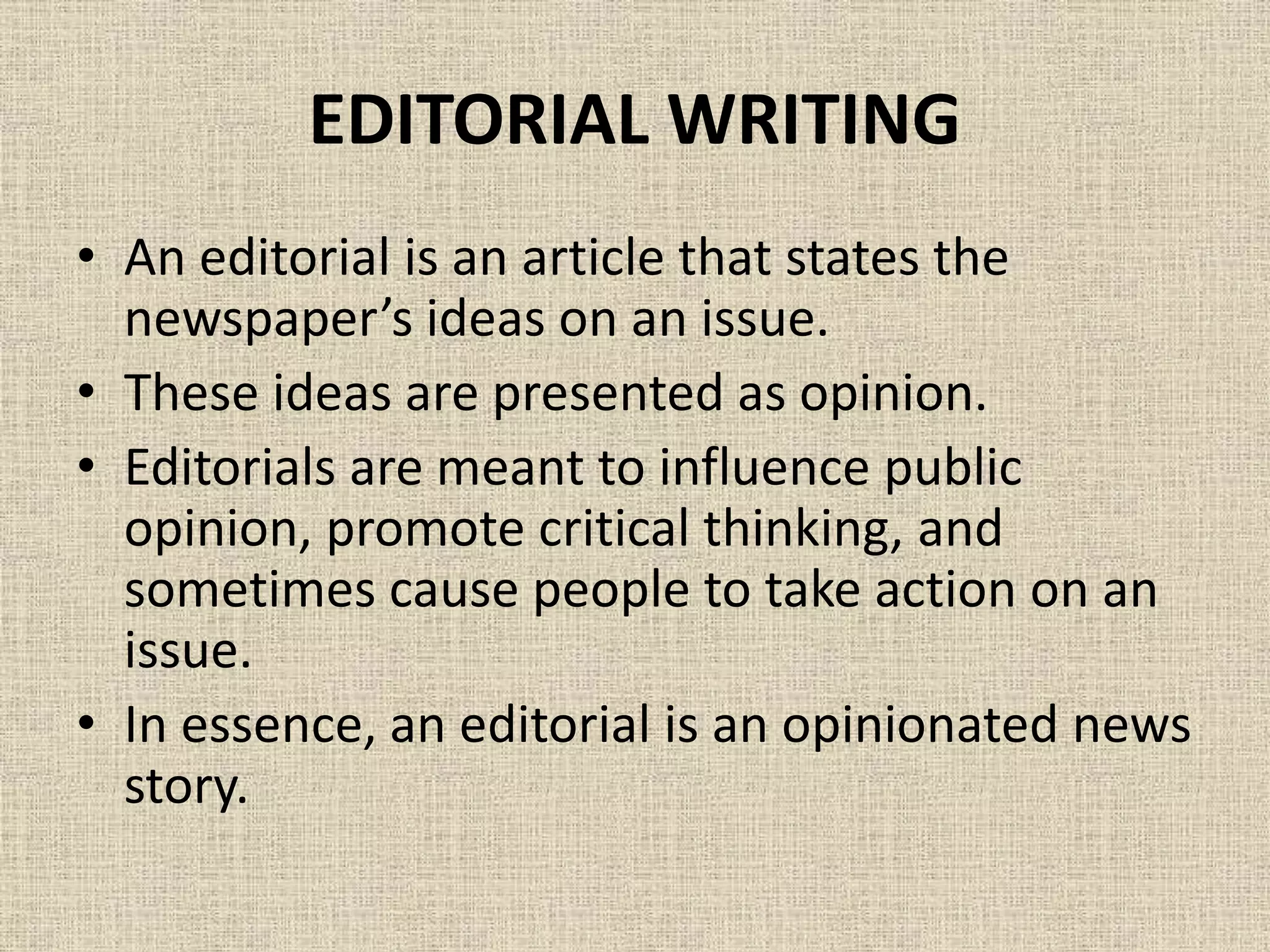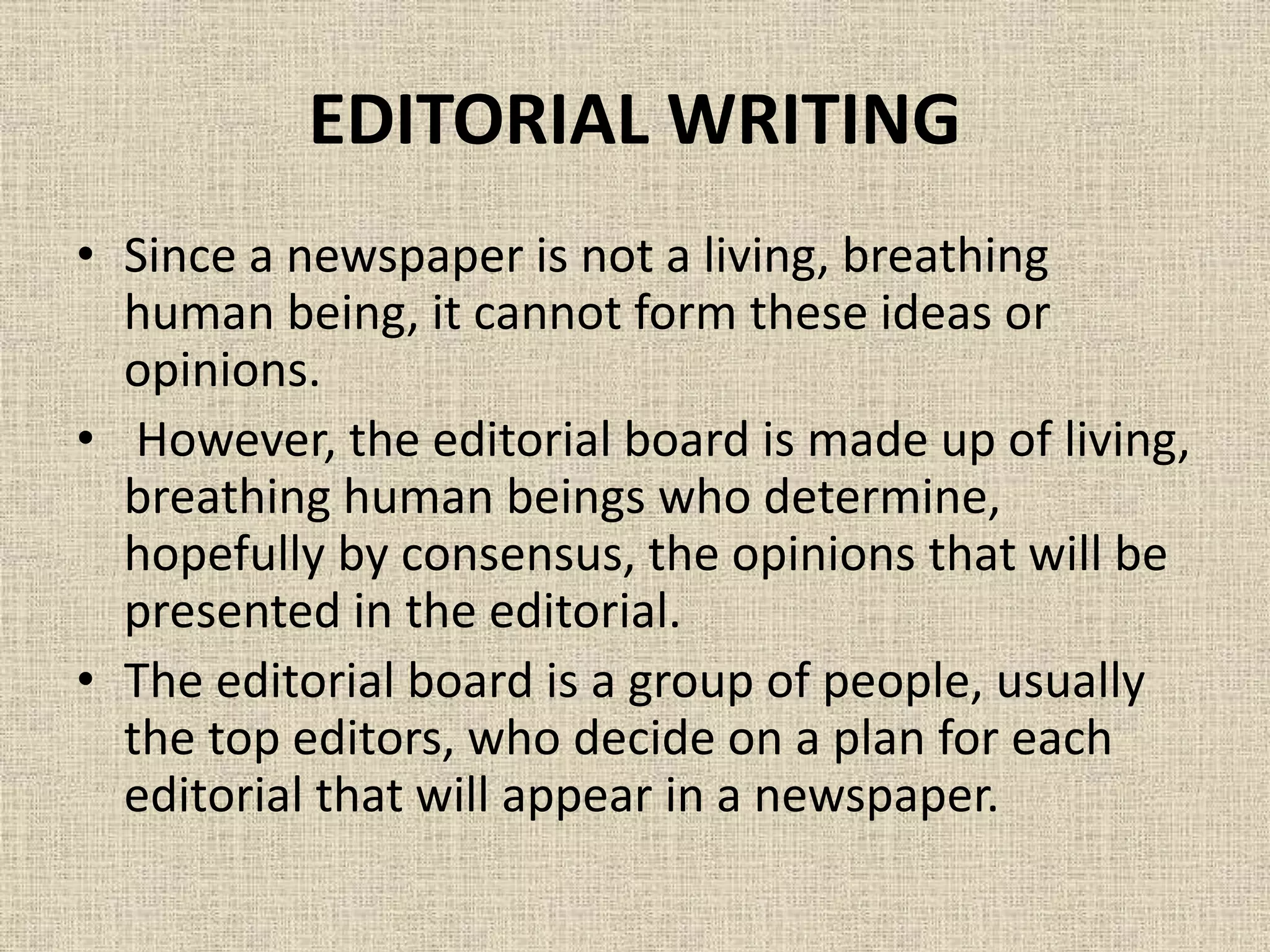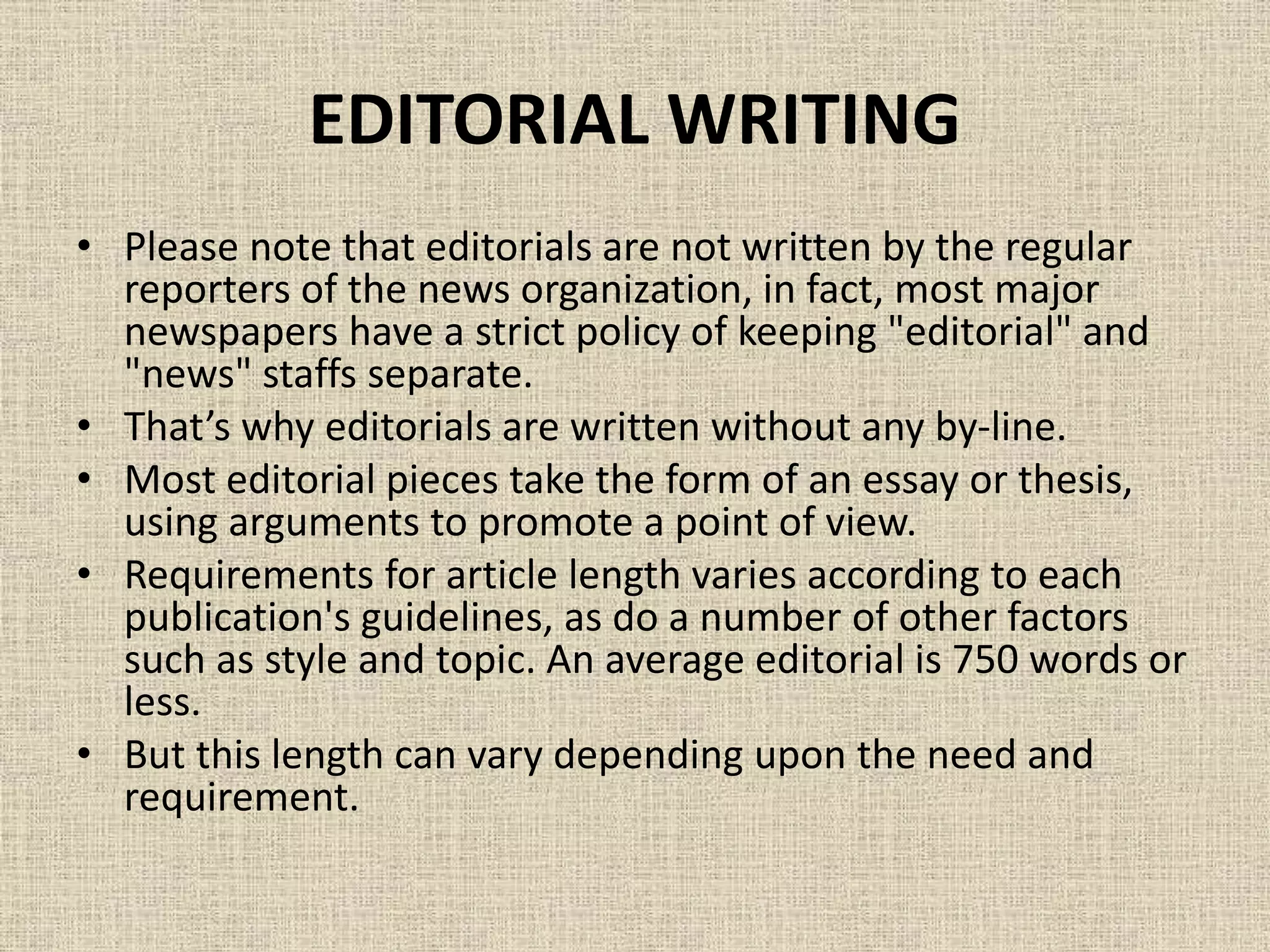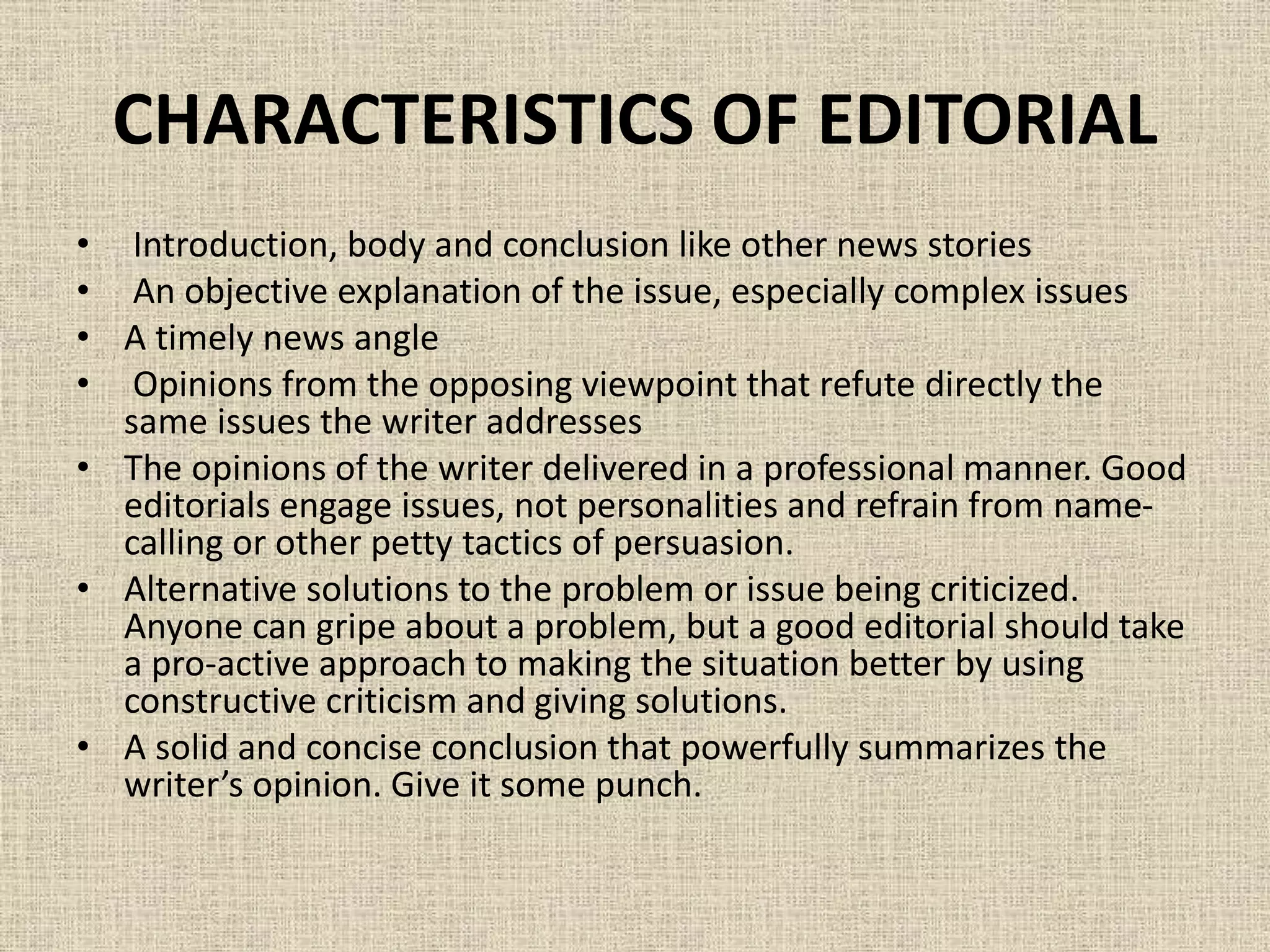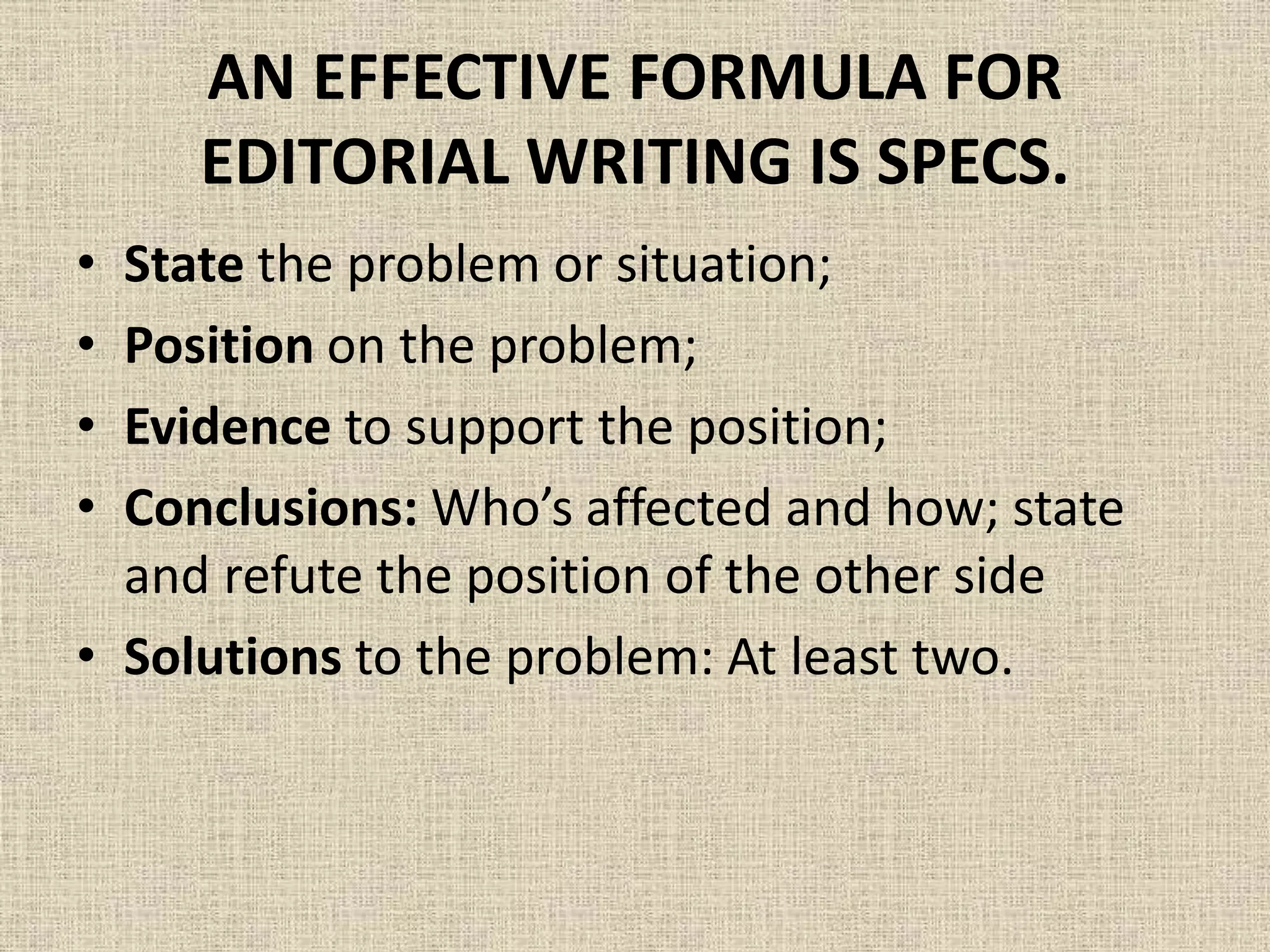An editorial is an article expressing a newspaper's opinion on an issue. Editorials are written by an editorial board and aim to influence public opinion, promote critical thinking, and potentially spur action. Effective editorials clearly state the issue, provide evidence to support the newspaper's position, consider counterarguments, and offer solutions. They seek to engage readers and discuss issues rather than attack personalities.

